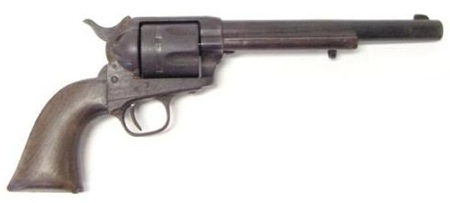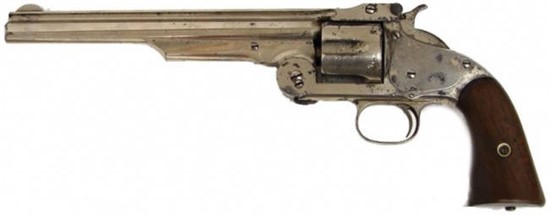|
A cloud of dust ...
a scream of death ...
comes the “Spaghetti Western”
Maximum splendor period, 1965-1970
The early examples of Italian westerns produced in the sixties looked more or less like American B-westerns, with cast and crew hiding behind American sounding pseudonyms. With the genre still in its infancy, most film produced in the transitional year 1965 mixed American with Italian influences, like Duccio Tessari’s Ringo movies, A pistol for Ringo and Return of Ringo, with Giuliano Gemma, the first Italian mega star of the genre. Leone still had signed the international version of A Fistfull of Dollars with the Americanized pseudonym Bob Robertson. The first Italian to sign a spaghetti western with his own name would be Sergio Corbucci for Minnesota Clay (1965). In this rather brief period most of the films that have become classics were made. In 1966 Leone made The Good, the Bad and the Ugly, commonly regarded as the quintessential spaghetti western, and now considered by many to be the best western ever made. Another milestone was the groundbreaking Django by Sergio Corbucci (often called ‘the other Sergio’), which became the prototype of the vengeance tale, and spawned numerous films with ‘Django’ in its title. Another director from the golden period of the genre, is Sergio Sollima (‘the third Sergio’), the most intellectual and politically committed of all spaghetti western directors. His The Big Gundown (La Resa dei Conti, 1966), with Lee van Cleef, who had also appeared in two of the three Dollar movies, is a tale about class struggle as well as a deconstruction of the mythology of the law-upholding gunslinger. Damiano Damiani's A Bullet for the General (Quién sabe? 1966), a film that set the tone for a series of political westerns set in Mexico during of the several Mexican revolutions, the so-called ‘Zapata westerns’ (occasionally called ‘Tortilla westerns’). Set in Mexico, and filmed in a baroque western style, the Zapata westerns nevertheless seemed more concerned with European than American (North or Latin) politics. In the sixties Marxist ideas were wide-spread among European intellectuals, especially in the Mediterranean countries, and the Zapata westerns seem to reflect the revolutionary ideas that lived among them. Being more sophisticated and intellectual than most ‘ordinary’ spaghetti westerns, the Zapata westerns were popular among students. But they were also very popular among third world audiences. 1969 showed a decline in the number of westerns produced, and a tendency to parody the genre, already announced in the previous years, became more apparent, especially in the Sartana movies, often called the answer of the spaghetti western to the James Bond movies.

|
Una nuvola di polvere…
un grido di morte…
arriva lo “Spaghetti Western”
Massimo splendore dal 1965 al 1970
I primi western all’italiana degli anni sessanta assomigliano, più o meno, ai western americani serie B, con attori e registi che adottano pseudonimi americanizzati. Con il genere ancora nella sua infanzia, la maggior parte dei western prodotti nel anno di transizione 1965 offrano una combinazione di elementi americani e italiani, come per esempio i due film di Duccio Tessari sul personaggio di Ringo: Una pistola per Ringo e Il ritorno di Ringo, con Giuliano Gemma, il primo superstar italiano del genere. Leone aveva ancora firmato la versione internazionale di un pugno di dollari con il pseudonimo americanizzato di bob Robertson. Il primo italiano a firmare uno spaghetti western con il proprio nome sara Sergio Corbucci per Minnesota Clay (1965). In questo, piuttosto breve periodo la maggior parte dei grandi western all’italiana sono stati prodotti. Nel 1966 Leone Leone gira Il buono, il Brutto e il Cattivo, la quitescenza della produzione di western all’italiana, e considerato da molti come il migliore western mai realizzato. Un’ altra pietra miliare è Django di Sergio Corbucci (l’altro Sergio), il prototipo del western che tratta la vendetta del protagonista; il film genera numerose imitazioni con ‘Django’ nel titolo. Un altro regista dal periodo d'oro del genere, è Sergio Sollima ('il terzo Sergio'). Impegnato politicamente, è anche il regista più intellettuale del mucchio. La Resa dei Conti ,con Lee van Cleef, veterano della trilogia del dollaro, è una storia di lotta di classe, così come una decostruzione del mito del pistolero che uccide a norma di legge. Quién sabe? (1966) di Damiano Damiani, un film che da il tono per una serie di western sulla rivoluzione messicana, i cosiddetti Zapata western. Negli anni sessanta il marxismo era molto popolare tra gli intelletuali europei, soprattutto nei paesi del Mediterraneo; gli Zapata western sembrano riflettere le idee rivoluzionarie che vivevano tra di loro. Essendo più sofisticato e intellettuale dello spaghetti western ‘normale’, il sottogenere dello Zapata western era molto popolare tra gli studenti. Ma era anche molto popolare tra il pubblico del terzo mondo. Nel 1969 il numero di western prodotti è in calo, e una tendenza alla parodia, già annunciata negli anni precedenti, diviene più evidente, soprattutto nei film sul personaggio di Sartana, spesso considerato come la risposta dello spaghetti western al personaggio di James Bond.

|